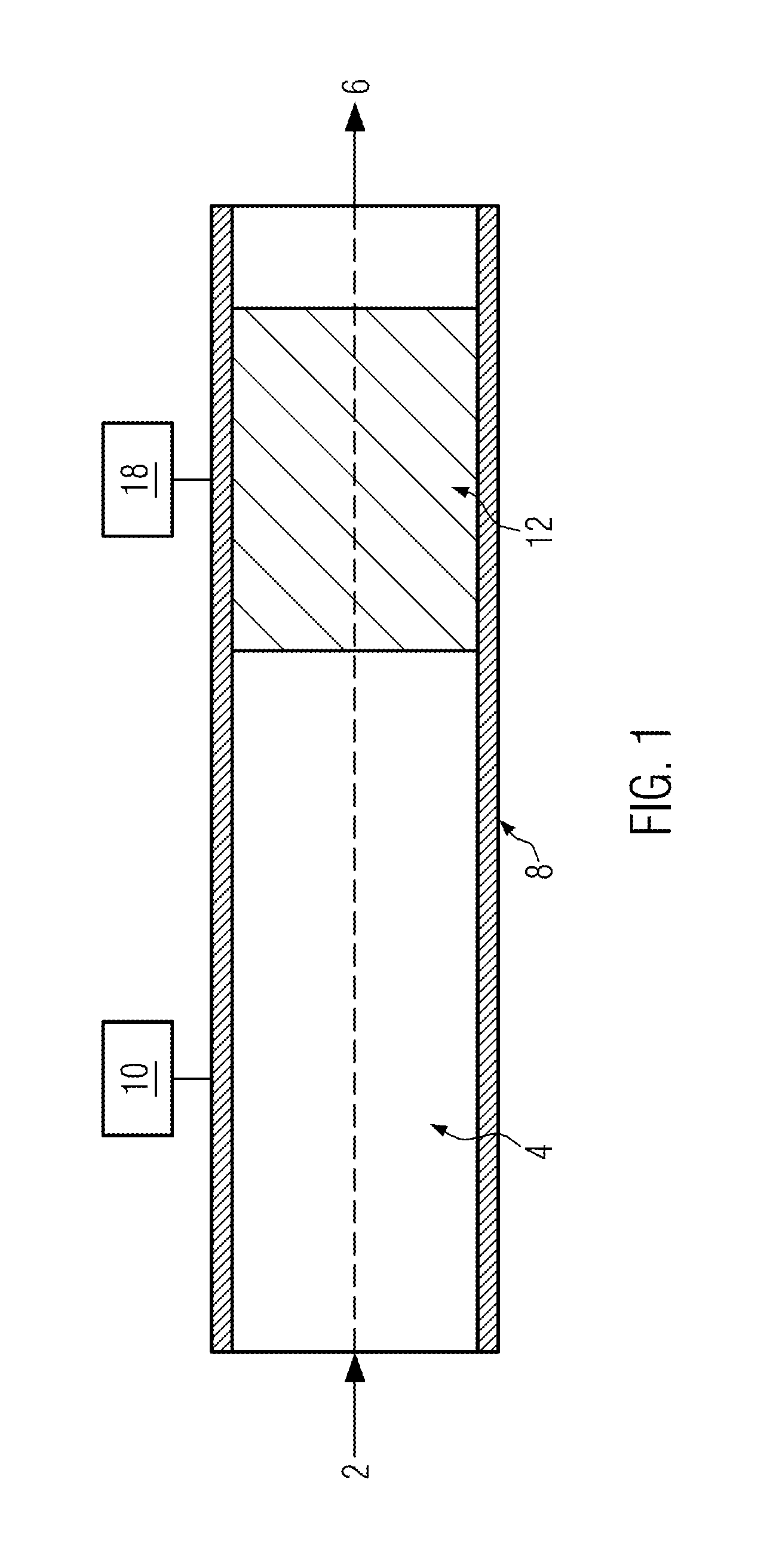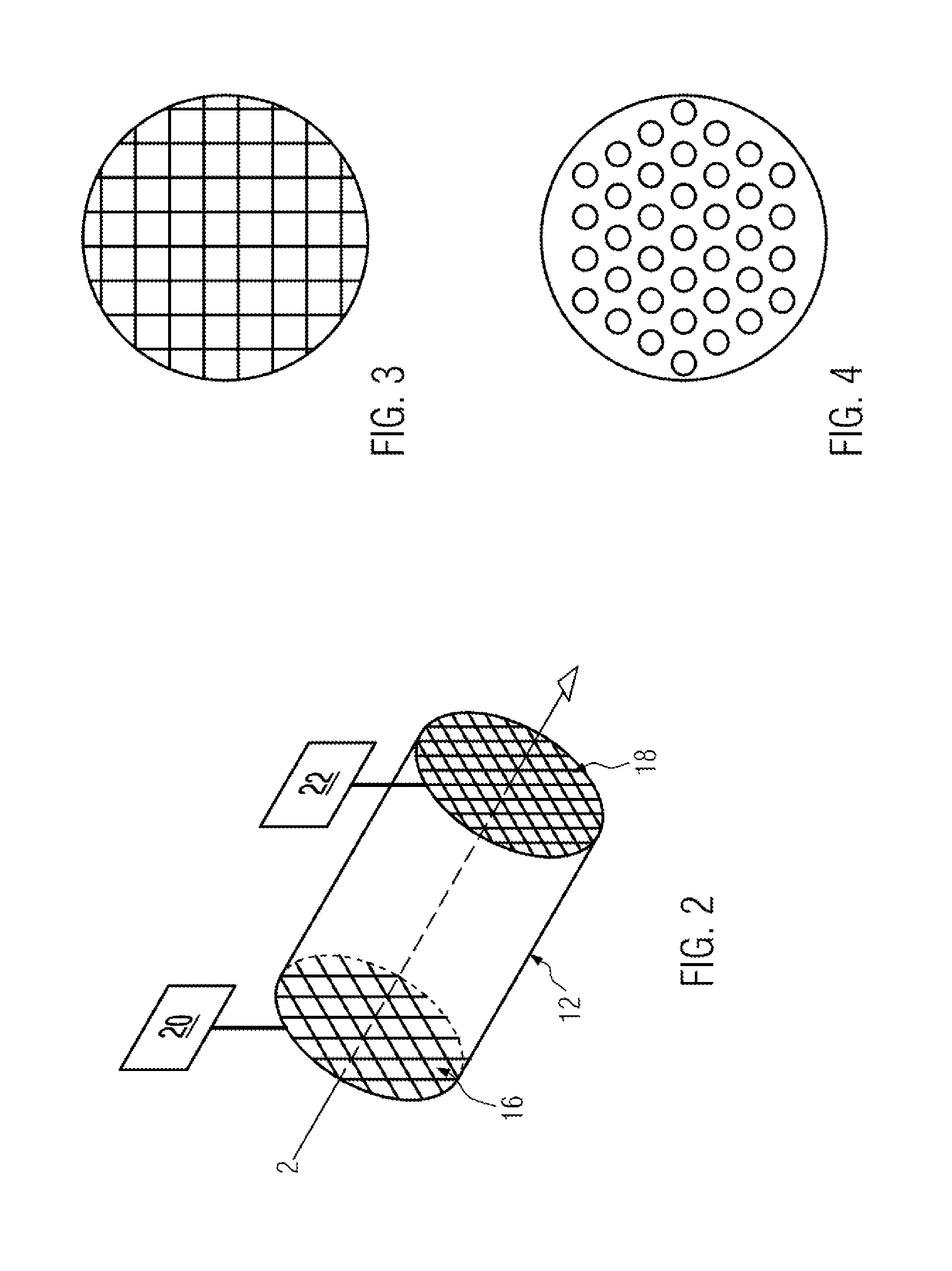Apparatus and method for purifying thermoplastic polymers
- Summary
- Abstract
- Description
- Claims
- Application Information
AI Technical Summary
Benefits of technology
Problems solved by technology
Method used
Image
Examples
Embodiment Construction
[0036]FIG. 1 schematically shows an apparatus for purifying thermoplastic polymers, comprising a means 8 for generating and conveying a polymer melt 4, the polymer melt 4 being contained therein. The means 8 includes a first heating unit 10 for heating the polymer melt 4 flowing through in the direction of arrow 2. Furthermore, within the means 8 a filter means 12 is contained comprising, according to the disclosure, a second, separate heating unit 18 by means of which the temperature of the filter can be set independently from the temperature of the polymer melt.
[0037]FIG. 2 shows a preferred embodiment of filter means 12. In this configuration, the filter means comprises a particle filter 16 and a micro-sieve 18 in an arrangement in which the polymer melt first passes the particle filter 16 and then the micro-sieve 18. Furthermore, the particle filter 16 and the micro-sieve 18 each have a separate heating unit 20 and 22, respectively, serving to set the temperatures of the particl...
PUM
| Property | Measurement | Unit |
|---|---|---|
| Temperature | aaaaa | aaaaa |
| Temperature | aaaaa | aaaaa |
| Temperature | aaaaa | aaaaa |
Abstract
Description
Claims
Application Information
 Login to View More
Login to View More - R&D
- Intellectual Property
- Life Sciences
- Materials
- Tech Scout
- Unparalleled Data Quality
- Higher Quality Content
- 60% Fewer Hallucinations
Browse by: Latest US Patents, China's latest patents, Technical Efficacy Thesaurus, Application Domain, Technology Topic, Popular Technical Reports.
© 2025 PatSnap. All rights reserved.Legal|Privacy policy|Modern Slavery Act Transparency Statement|Sitemap|About US| Contact US: help@patsnap.com



